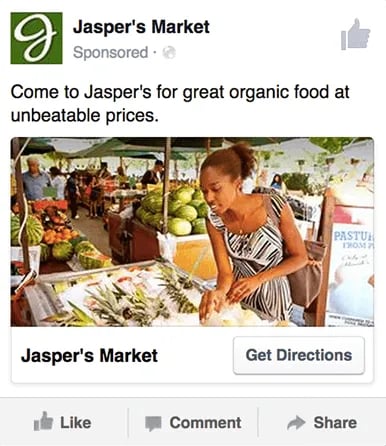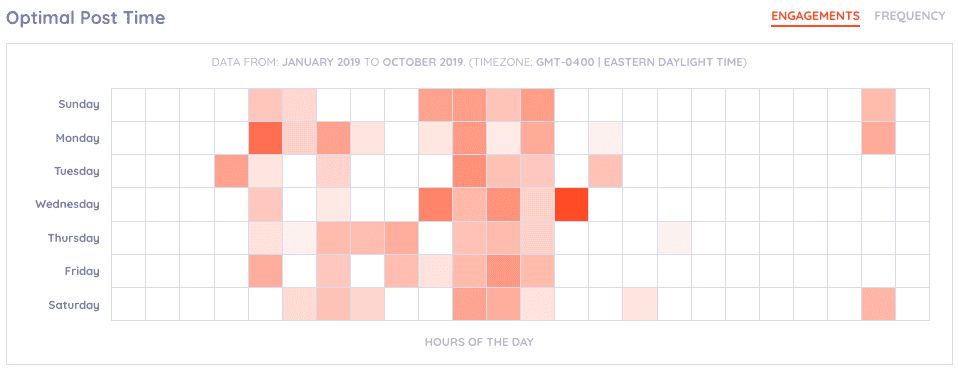As any small business owner knows, marketing can be pricey. Big businesses can throw massive budgets at expensive marketing strategies, but small businesses just don’t have that luxury.
Small businesses don’t have the budget for national ads, hiring celebrities, or creating flashy campaigns. So how can a small business create an achievable marketing strategy that gets results?
The answer is Facebook marketing.
Anyone can market on Facebook–big brands, small businesses, and individuals alike. Facebook marketing is a cost-effective way for a small business to reach a big audience on a minimal budget. In fact, surveys show that the majority of Facebook users follow at least six brands.
And you could be one of these brands. In this article, we’ll go over some Facebook marketing strategies you can try to increase your customer engagement, build brand awareness, and drive sales.
Table of Contents
- 1. Create a separate Facebook group and community page
- 2. Utilize Facebook Ads
- 3. Invest in content creation
- 4. Schedule repurposed and new content strategically
- 5. Hire micro-influencers
- 6. Follow and analyze your competitors
- 7. Learn how to live stream effectively
- 8. Respond to customers promptly
- Final words
- Frequently Asked Questions
1. Create a separate Facebook group and community page
Your first task is to set up your Facebook business page.
But the business page isn’t the end of it. One Facebook marketing strategy is to create a group for your business, where fans, customers, and anyone with an interest in your brand can come together and form a community.
Many of us crave community, and fostering community is a great way to drive brand engagement and create customer loyalty.
One example of a brand using this strategy is Instant Pot. Their Facebook group has 3.2 million members and encourages lively discussion about all topics food-related.
Screenshot taken from Instant Pot’s Facebook page
You can use a Facebook group to start discussions, add events, upload media, and provide instructional guides.
Studies show that customers respond better to user-generated content than overly promotional marketing. A Facebook community is a powerful tool for user-generator content, because it’s full of real people uploading real comments, videos, and pictures. Instead of feeling salesy, content feels more authentic and organic.
A busy Facebook group page not only fosters customer loyalty, it also shows customers who are on the fence that your brand is worth engaging with. A Facebook group essentially becomes free advertising.
2. Utilize Facebook Ads

Instead of wondering what type of domain you need to host your marketing campaign, Facebook ads can be a cost-effective marketing strategy for your small business.
Where traditional ads are expensive and provide uncertain ROI, the cost of Facebook ads is entirely up to you and your advertising budget, and can easily scale with your business.
You can also use certain Facebook analytics tools to obtain a comprehensive view of how well your ads are working to drive traffic, post engagement, and sales.
3. Invest in content creation
Content creation is the backbone of any successful Facebook marketing strategy. Content is what drives audience engagement, so investing in good content is paramount.
Chances are you’ve already looked into how to build your website. Maybe you’ve even started creating content for your online visitors, including blog posts, downloadable guides, and FAQs.
Social media users tend to engage more with video content, but it’s important to have a variety of different formats. Go for a mixture of text, image, and video posts to reach the maximum number of people possible.
And remember: don’t just focus on overly promotional content. If, for example, you want your customers to buy an .ai domain from your domain service, you’ll need to be creative. Following the social media post rule of thirds may help:
- One-third promotion: Marketing your brand through ads and promotional content.
- One-third sharing: Sharing content from others helps your feed seem less spammy. You can share posts from other brands to build good relationships with them and their fans, expert opinions that are relevant to your industry, posts by influencers you work with or would like to work with, and user-generated content from your customers.
- One-third interaction: Engage with your audience through conversation, replies, and interaction with influencers. Utilize user-generated content.
Invest time and resources into your content creation. For image posts, use high-quality pictures. For videos, ensure they look professional. For text posts, make sure your copy is thoroughly edited. For sharing content, make sure the source is vetted to avoid any nasty associations.
This is all to say: make sure your Facebook page comes across as professional and thoughtful. Lazy content will only drive people away.
4. Schedule repurposed and new content strategically

Facebook users expect regular content, so be consistent.
Post new content at least once a week to keep your audience engaged, but aim for more. Even if it’s a simple text post, it’s a good idea to stay on your followers’ Facebook feeds. This is especially vital as 37% of social media users prefer brands that directly engage with their audiences
It can be difficult to keep up with the demand for content, though.
To stay relevant, you can repurpose old material. For example, take an old post and slap a new coat of paint on it. Or repost an old picture and invite people to get nostalgic. There are lots of creative ways to repurpose old material to keep yourself at the top of that feed.
Also, remember that timing is key. If your audience is mainly US-based, aim to post in the correct timezone. Or schedule posts across different time zones to strike at the right time.
A good social media scheduling tool can help you stay organized. You can plan posts weeks or even months in advance, and tools like Keyhole.co let you schedule unlimited posts.
5. Hire micro-influencers
A micro-influencer is a social media influencer with between 10,000 and 100,000 followers. Micro-influencers have some of the most dedicated fan bases, since a smaller follower count allows for a more personal relationship between influencer and fan.
Where big influencers and celebrities seem untouchable, their lifestyles unattainable to us mere mortals, micro-influencers are much more relatable–and therefore trustworthy.
Hiring a micro-influencer costs a lot less than hiring a celebrity, but their ability to connect your small business with passionate fans is unparalleled. You can offer them free products and ask them to make review videos, recommendation posts, or stories.
Micro-influencers might even live in your community, which can benefit small businesses that sell to local people.
And don’t forget to use influencer analytics to track the success of micro-influencer campaigns.
6. Follow and analyze your competitors

If your direct competitors are on Facebook, there’s a good chance you should be, too. And then, you need to outperform them!
You and your competitors are vying for the same audience, but what if they’re doing it better? Use social media competitor analysis to analyze your competitors’ engagement levels.
Think of it like observability, the ability to monitor a system’s inputs and outputs to determine its overall success. Tools like Keyhole.co allow you to add a competitor’s profile and analyze their posts, engagement, follows, likes, and other KPIs to figure out what they’re doing right.
7. Learn how to live stream effectively

Video content wins more likes and comments than any other form of content. Live video is even better, since it encourages people to get involved in discussions in real-time.
Facebook Live lets you stream from your device directly to your audience, allowing them to leave comments that you and other watchers can respond to. It’s kind of like a party, where people can chat, ask questions, and just get to know each other.
You can live stream product launches, product demonstrations, news about upcoming products, AMAs, or Q&As. You can also ask micro-influencers to do Facebook Lives to promote your small business.
8. Respond to customers promptly
Social media has become a valuable customer service tool, and customers expect quick responses from brands about their problems. Social listening can help you keep track of people mentioning your brand so that you’re always quick to respond.
Keyhole makes the process straightforward. Using the dashboard, you can track branded hashtags that are relevant to your company, product, or specific marketing campaign. This helps you monitor Facebook mentions and immediately engage with people who are talking about you.
If a customer messages you, comments on your posts, or makes a post in your Facebook group about a problem they’re having, try to respond promptly, politely, and helpfully. Your response will be public, and others will see how much your business cares about its customers.
Take advantage of people’s sentiments for small businesses by being approachable, helpful, and personable. And let your followers see you doing it! After all, that’s free advertising.
Final words
For small businesses on a small budget, Facebook marketing strategies are a cost-effective solution to making a big impact.
Whether you want to grow customer engagement, spread brand awareness, or increase sales, utilizing Facebook marketing strategies can help.
Fostering a community through groups, utilizing Facebook ads, creating genuine and engaging content, leveraging micro-influencers, and learning how to live stream will all help boost your visibility and impact.
Facebook also offers a great opportunity to analyze the competition as well as your own performance through social listening tools. So why not sign up for a 14-day free trial today?
Use these insights, and you’ll be all set to craft an effective Facebook marketing strategy that works for you.
Related Articles
How To Create A Monthly Facebook Analytics Report + Free Template
When Is The Best Time To Post On Facebook?
Frequently Asked Questions
1. What are Facebook marketing strategies for small businesses?
Facebook marketing strategies for small businesses are cost-effective and efficient marketing solutions for small companies that need to make the most out of their tighter budgets.
2. What kind of content should I post on my Facebook page?
Your content will depend on the demographic of your audience. Age, gender, location, and other demographic categories all affect our browsing habits and the type of content we engage with the most. Overall, video content ranks highest in terms of engagement, but other content is important to balancing your Facebook page. And depending on your type of business, other content might suit your brand better.
3. How can I increase engagement on my Facebook page?
Analyzing your target demographic is vital to increasing engagement. Who is your audience? And what kind of content do they respond to? What time is your audience most active? Posting the right kind of content for your demographic at the right time is vital to increasing engagement.
4. How can I measure the success of my Facebook marketing strategies?
Want to know if a particular post drives traffic to your store page? Want to test the engagement of a certain type of content? Want to analyze sales figures from a promotional post? Using tools like Keyhole, you can monitor every aspect of your Facebook marketing strategy.